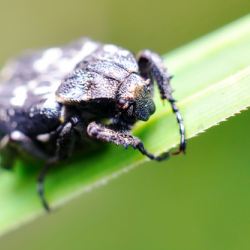Right now, 300 Austrian ticks are part of an interesting experiment. They are biting through a skin-like membrane for science, because they secrete a cement-like substance with excellent adhesive properties.
The sticking power of ticks is well known, but most people believe it's just mechanical. This is the belief because you turn a tick counter-clockwise to remove it, the opposite of the rotation that drilled in, but prior to that they produce a "tick cement" that anchors them. Lots of organisms, from bacteria to fungi to large animals to plants use chemical and mechanical ways to attach themselves to surfaces. But for human use they would have to function over a temperature range, in wet environments, and to challenging surfaces. And then there is the cultural issue. We can't even get a giant subset of the population to accept food made using scientific processes, a heart transplant couldn't get approved in the modern anti-science environment, so using bacteria to act as a cement in human tissue would be difficult to accept for people who think natural gas, vaccines and GMOs are a bad thing.
"The tissue adhesives that are currently used in surgery, for example for serious skin injuries or liver tears, are toxic to some extent," says Sylvia Nürnberger from the Department of Trauma Surgery at the University of Vienna. But other adhesives are not strong enough, making biological alternatives ideal for skin, cartilage, ligaments and tendons.
Thus the ticks. And blue mussels, sea cucumbers and more. On March 6th, 2017 the 1st European Network of Bioadhesion Expertise meeting will take place at the Natural History Museum in Vienna, the first being to mean they expect to be more as these projects get closer to reality. Right now, only DOPA (a modification of the amino acid tyrosine) from blue mussels is even in the preclinical trial phase. "However, because of its low bonding strength, the DOPA bonding mechanism is not suitable for all medical applications, so that there is still a need for new adhesives," says Nürnberger, and so the interest in replicating and producing alternative adhesives.
